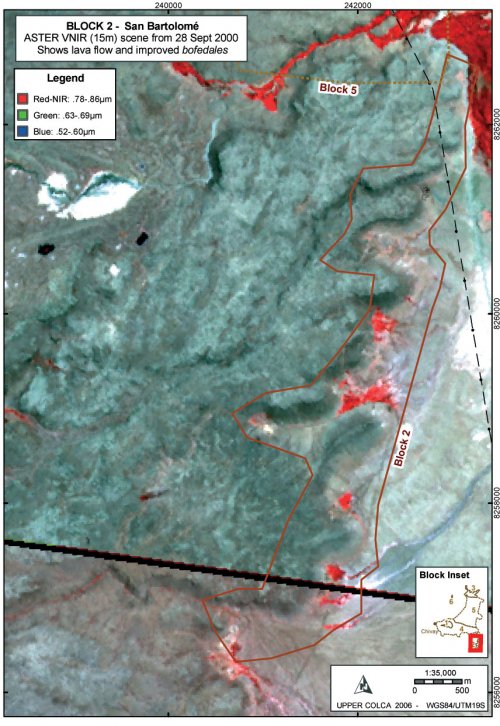4.1.3. High Puna: Block 2 survey and adjacent Blocks 4 and 5
This high altitude zone of the study area is dominated by the Pliocene lavas and Quaternary moraines, as will be described in more detail below in the geology section. Much of these survey blocks consisted of porous lava rock and sandy soils covered by a mantle of ash, lapilli (rock fragments between 2 - 64 mm across) and the occasional volcanic bomb (molten rock between 64 - 1000 mm). During the dry season surface water was available only sporadically across the area and, unsurprisingly, reliable water sources frequently have archaeological sites nearby. The renowned "Ventanas del Colca" tuff formations occur on the edge of the San Bartolomé survey area (block 2) at the point where the highway connecting Callalli with Arequipa climbs out of the Pulpera drainage and straightens out for its run across the open puna grassland.
This area is also remarkably wet, the environment is productive, and faunal density is relatively high. Even during the dry season the Block 2 area has reliable water.
Figure 4-10. ASTER scenes with the terminus of volcanic breccia outcrop in green, photosynthesizing plant areas (bofedales) shown in red pixels, and ash in white. The black diagonal line is a seam between the two scenes.

